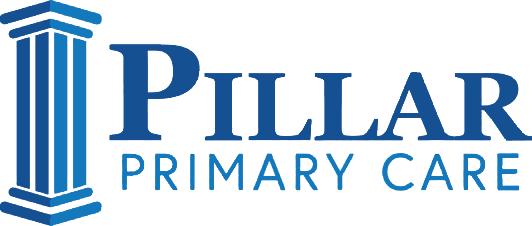Like any building meant to last, good health requires a strong foundation. Historically, these principles were part of our common culture. Unfortunately, the pressure of modern life encourages us to drift away into practices built largely around convenience and failure to develop appropriate boundaries in our lives. We get up when we want. We go to bed when we want. We carry the pressure of daily work without rest and fill our time with more tasks than ever before.
The Pillar Perspective teaches that the four pillars of good health should be addressed by every person at every stage of life. Doing so improves one’s health in dramatic fashion. This is why we focus so much time and energy on walking with our patients through the nuances of each step. Many times, addressing these four pillars can be curative for illnesses like diabetes, high blood pressure, and obesity. For other illnesses, addressing these four pillars will dramatically improve the quality of life and lower the burden of disease.
Here’s a brief description of each pillar.
Nutrition
Good nutrition is a two sided coin. The first side is What To Eat. The other side is When To Eat.
What To Eat
In one sentence, we advocate for a whole food diet built on an appropriately low enough carbohydrate diet with plenty of high quality fat and a moderate amount of protein. We base our approach on a thorough understanding of human physiology, on the fact that we all share the same biochemical processes that drive us to maintain a normal, function state called homeostasis. This allows us to adapt my advice to fit the individual patient’s need at any given step while basing it on the same core physiology we all share. We don’t believe a one size fits all approach works for individuals. Just like giving directions to the same destination to different people requires an understanding of where they are starting from and knowledge of how they are going travel, so does nutrition advice. Maintaining a stable blood glucose and reducing blood insulin levels are the primary objectives. When we achieve this dual goal amazing gains in health are realized.
When to Eat
Scheduling time each day to eat and to not eat is a critical part of good health. The human body needs time away from food to be healthy. As part of the first pillar of good health we teach a basic time restricted eating (TRE) to all patients whereby we encourage them to have 12-14 hours of each 24 hour day with no food intake. For many, we use intermittent fasting ranging from a common pattern of 16 hours to 24 hours several days per week to multi-day fasts under careful supervision.
Pillar Primary Care supports good nutrition at nearly every office visit and by offering nutritional counseling with Carly to all members.
Exercise
The second pillar of good health is good exercise. We encourage patients to develop a habit of movement that encompasses three types of exercise. First, steady state cardiovascular exercise doing something that is enjoyable and preferably outside. Second, resistance training several times a week working major muscle groups in compound movements. Finally, high intensity interval training pinging out the heart rate to stimulate amazing metabolic change.
Each of these kinds of exercise should be done after careful consultation. A primary goal is to do the exercise safely. Setting goals and moving to the next level of fitness is another objective we pursue.
Pillar Primary Care currently offers all patients exercise education and coaching with Terri Stewart, certified personal trainer.
Sleep
Our modern age allows for ‘burning the candle at both ends’ like no other time in history. The third pillar of good health is, in part, knowing when to turn the lights off. We focus on helping patients obtain optimal sleep of sufficient quality and consistency to produce daytime vigilance and wakefulness.
Disordered breathing while we sleep, sleep apnea and sleep hypopnea, is very common and extremely problematic. It worsens blood pressure management, diabetes, and raises the risk of early death when untreated.
Peace
The final pillar of good health is managing our stress to produce peace. It’s a good and lasting feeling of safety, security and freedom from worry. That’s not to say that one no longer has hard times or tough situations, but being able to manage those situations and develop ways to combat them are key. It’s often been said that all people feel pain but only some people suffer. Peace is experiencing the pain of life without suffering.
We discuss many of the ways this is possible in our office visits. We believe that Scripture is true when it says “do not be anxious about anything, but in everything by prayer and supplication with thanksgiving let your requests be made known to God. And the peace of God, which surpasses all understanding, will guard your hearts and your minds in Christ Jesus.” Philippians 4:6-7
The spiral of good health
As we work together making improvements, we’ll find ourselves circling back around to the beginning and starting again. Small, steady improvements build on each other to allow progress in other areas. Thus, a spiral of good health forms promoting disease reversal and restoration of health.

